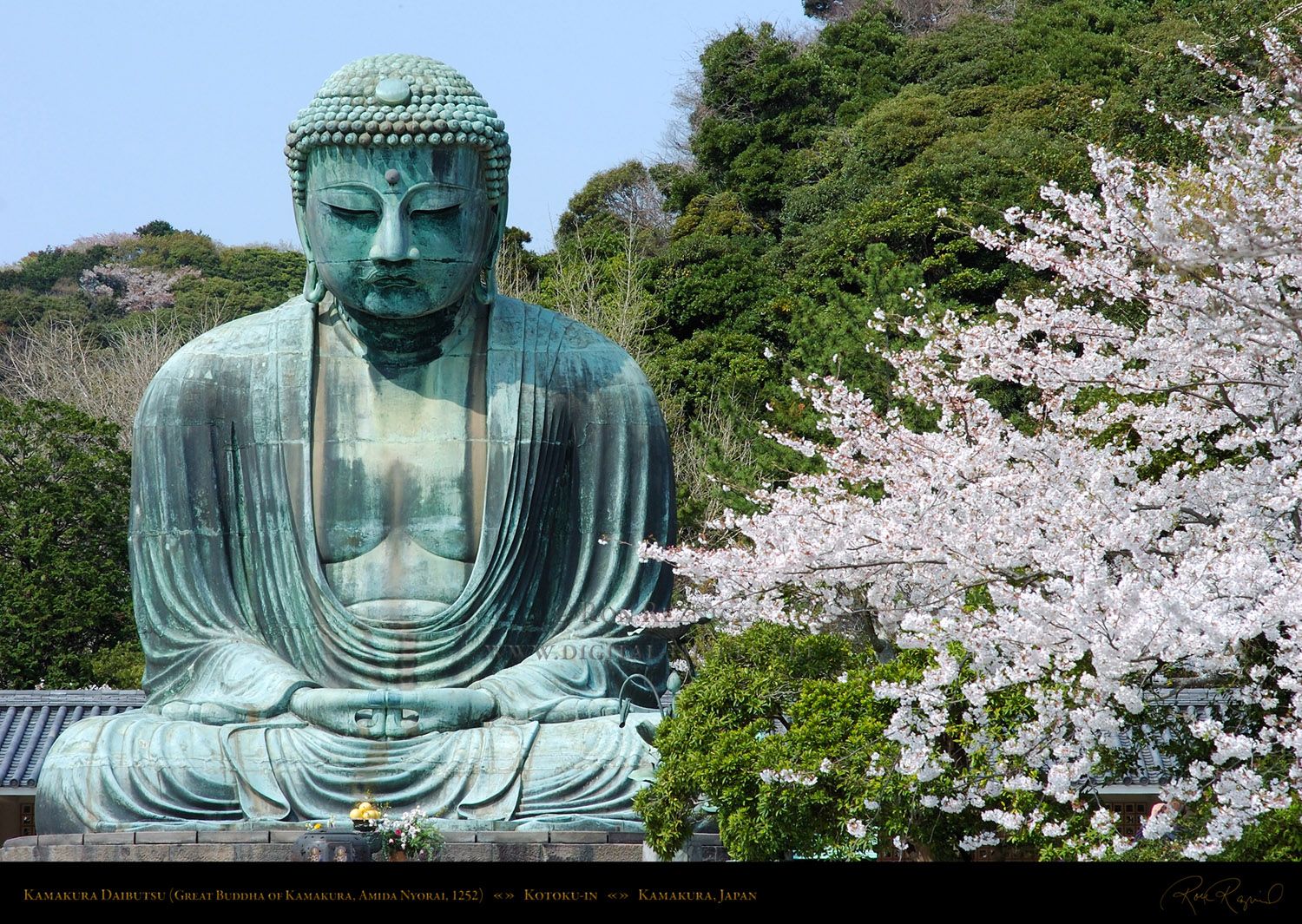Pure Land Buddhism, centered around the veneration of Amitabha Buddha, stands as a prominent school within Mahayana Buddhism, particularly flourishing in East Asia.
At its core lies the belief in rebirth in Amitabha‘s Western Paradise, known as Sukhavati or the Pure Land, through sincere devotion and invocation of Amitabha’s name.
The Splendor of Sukhavati
Described in scriptures as a realm of unparalleled beauty, Sukhavati is depicted as a land adorned with celestial beings, lush flora, and wish-granting trees. It is believed to be a place of ultimate bliss and refuge for those who earnestly seek rebirth through devotion to Amitabha.
The Radiance of Amitabha Buddha
Amitabha, revered as the Buddha of Boundless Light, embodies compassion and grace in Pure Land Buddhism. Originating from ancient tales where Amitabha, once a king named Dharmakara, renounced his throne to pursue enlightenment, Amitabha is revered for his boundless compassion and commitment to guiding sentient beings to liberation.
The Path to Salvation: The Holy Way and the Pure Land
Pure Land Buddhism delineates two paths to enlightenment: the Holy Way and the Pure Land. The Holy Way emphasizes self-discipline and wisdom as means to attain enlightenment, whereas the Pure Land offers a path illuminated by Amitabha’s grace, catering to those who may have lost their way or struggle with self-attachment.
Misconceptions and Realities
Despite its popularity, Pure Land Buddhism has faced criticism, often labeled as “pseudo-Buddhism” due to its emphasis on faith and simplicity. Some view it as an “Easy Path,” contrasting it with the rigorous practices of other Buddhist traditions. However, Pure Land practitioners assert that faith in Amitabha’s salvific power is the key to liberation, emphasizing the efficacy of reciting Amitabha’s name as a form of meditation and mindfulness.
Gender Dynamics and Rebirth
One notable aspect of Pure Land Buddhism is its perspective on gender and rebirth. Traditional beliefs suggest that women cannot attain awakening on their own but must be reborn as men in the Pure Land before achieving enlightenment. While these views reflect historical and cultural contexts, contemporary interpretations strive to reconcile such notions with modern understandings of equality and inclusion.
Embracing Devotion and Mindfulness
Central to Pure Land practice is the recitation of Amitabha’s name as a form of mindfulness and devotion. This practice serves to focus the practitioner’s mind on the Buddha’s qualities, fostering a deeper connection and paving the way for rebirth in the Pure Land.
Conclusion: A Path of Compassion and Faith
Pure Land Buddhism, with its emphasis on devotion and salvation through Amitabha’s grace, offers a unique avenue for spiritual seekers to find solace and liberation. Despite debates and misconceptions, its profound teachings continue to inspire countless devotees, guiding them on a journey towards enlightenment and ultimate peace.




